Email cadence: How to find your email marketing stride
| October 15, 2020
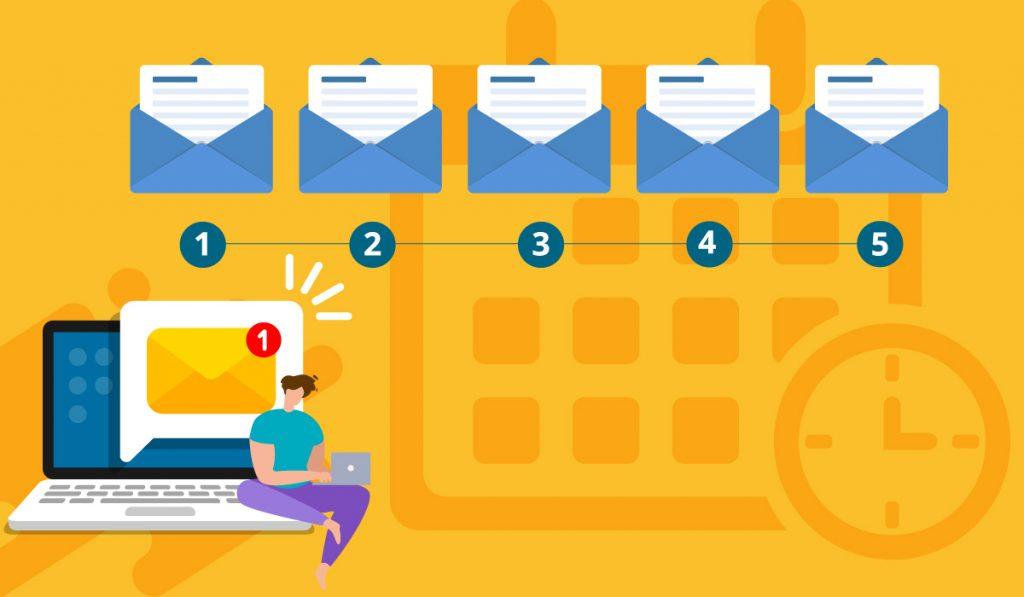
Email marketing guides your customers on a journey of discovery. But for campaigns to work, you need to pace things right.
If you email contacts too frequently, they’ll unsubscribe. If you don’t email them enough, a competitor will beat you to the sale. And if you send great content at the wrong time, it’ll languish unread.
In this overview, we’ll show you how to choose an email cadence that will hold your customers’ attention every step of the way.
What is email cadence?
Email cadence refers to how emails are spaced out over a campaign. One component is frequency (not sending too many emails or too few). Another is strategic timing (sending content at the right time). A well-designed cadence will improve conversions without risking too many unsubscribes.
Does cadence mean what you think it means?
People often assume ‘cadence’ means sending emails at regular intervals – daily, weekly or monthly. After all, that’s how we talk about cadence when scheduling meetings and other recurring events. In email marketing, however, cadence is more about strategic patterns.
In many cases, that actually means varying times between emails.
Think of a company selling tax preparation software. They might go quiet much of the year and ramp up their email marketing as tax season approaches.
In essence, cadence means rhythm or flow – like the rise and fall of someone’s voice, or a runner’s feet hitting the ground. Serious runners pay attention to their cadence and how it affects their performance.

Like running cadence, email cadence is about finding the most efficient stride to meet your goals. However, unlike running, the ‘steps’ of an email campaign don’t have to be spaced uniformly – just strategically.
Essentially, email cadence is about having a plan and scheduling emails in a way that makes sense for your marketing goals and customer experience.
How to pick the right cadence
So what is the right cadence? As with many things in email marketing, it depends. Different industries, products and campaign types lend themselves to different cadences.
With all those variables, settling into the right cadence can take some trial and error. Still, you should be able to get pretty close on your first try.
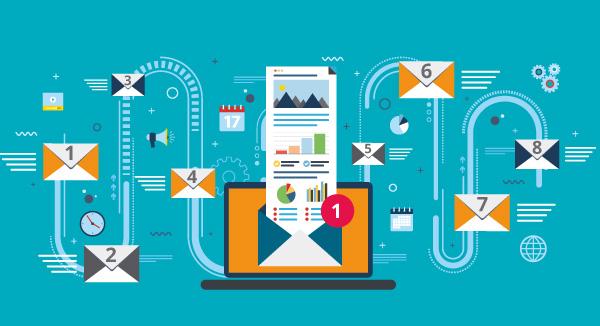
Start with the objective of your campaign. What do you want the recipient to get out of it? Think about what type of emails you’ll send to get them there. Consider your goals, but also the customers’ point of view. What content do they need to see first? How busy are they? What time constraints are they working under?
Let’s look at how this approach might play out in three scenarios:
1. Nurturing leads during a free trial
Knowing exactly where someone is in your marketing funnel makes it easier to pick the right email cadence. Let’s say you offer a free trial for digital asset management software – something we happen to know a bit about. When a customer starts the trial, it triggers a series of emails to keep them engaged.
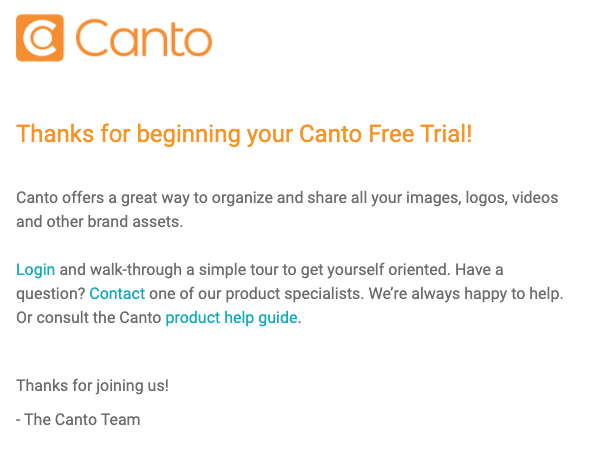
Objective
You want the customer to have a good experience with their free trial, so they buy a subscription when it ends.
Cadence strategy
This is a two-week trial, so time is of the essence. And anyone who’s gotten this far in the process is probably open to learning more. You can email them pretty frequently – certainly a few times a week.
Start things off with an introductory tutorial, so the user can hit the ground running. Then follow up every few days with emails highlighting your most popular features. Remind the customer when the trial’s about to end. Once it does, point them to their purchasing options.
2. Keeping customers engaged after a purchase
Cadences can also be triggered by a customer buying a specific product, especially a product with a replacement cycle. Sticking with our theme, let’s say it’s running shoes. You’ve sold the shoes, and you’ve got the customer’s email address. Now what?
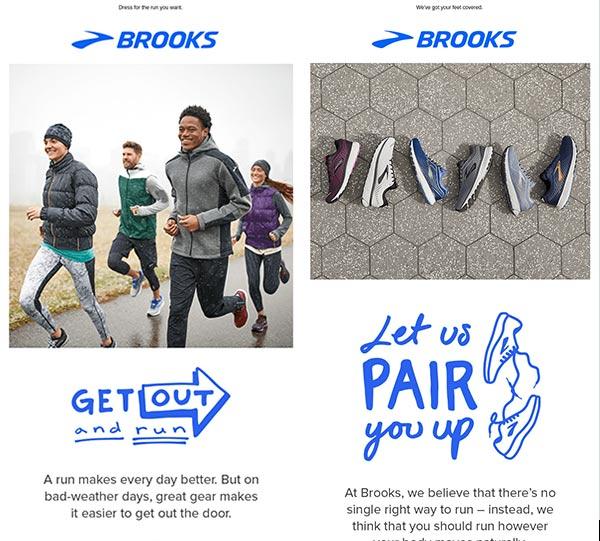
Objective
You want them to buy their next pair of running shoes from you too.
Cadence strategy
Avid runners replace their shoes every 3-6 months. Until then, keep the customer engaged by sending emails featuring informational running content. These emails should be fairly infrequent. You don’t want to bury customers in content and cause them to unsubscribe. When the time is right, ramp up the shoe-specific marketing.
3. Find a sustainable cadence for steady demand
What if you’re marketing a product people buy all the time? Products like fashion or food and beverage require an email cadence that’ll go the distance.
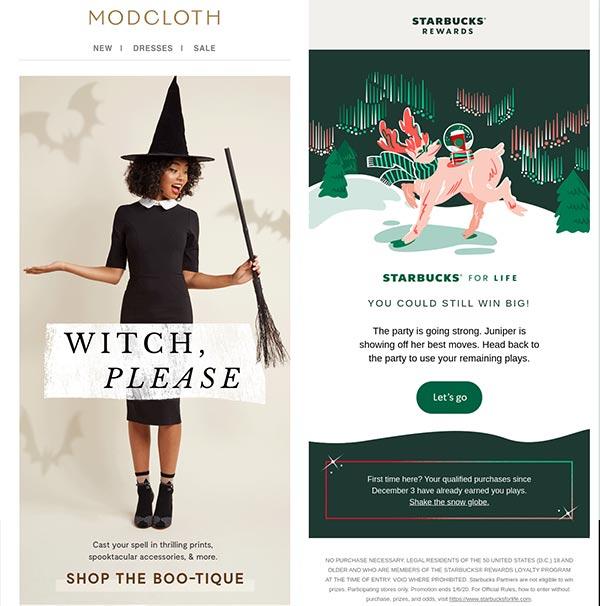
Objective
Keep your brand at the top of customers’ minds and cultivate positive brand association.
Cadence strategy
You’re contacting customers all year, so you need to figure out exactly how much email marketing they’re willing to tolerate over a long period of time. Compared to the examples above, you’ll need to experiment a bit more to find that sweet spot – more on that below.
In terms of content, variety is the name of the game. You don’t want customers to get bored. Designing emails around changing seasons and holidays is a classic way to keep things fresh and relevant.
Fine-tuning your email cadence
How do you know if you’re getting it right?
First and foremost, let your email analytics tools be your guide.
If a faster cadence causes a boost in click-throughs, you’re going in the right direction. If you see fewer clicks and an onslaught of unsubscribes, go back to the drawing board.
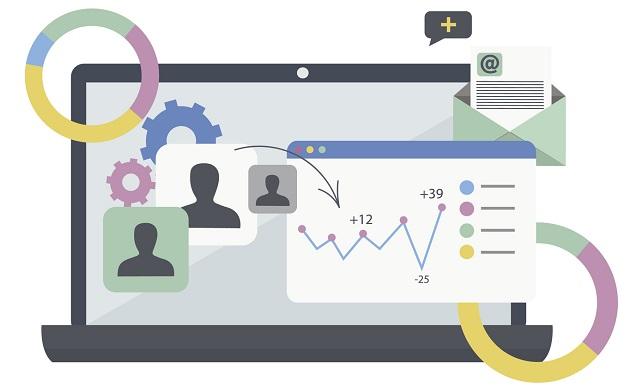
What if you’re seeing more engagement and more unsubscribes? Finding the right cadence is often a balancing act. In some cases, losing a small number of subscribers is worth it to get more conversions out of those who remain. But every situation is different – tread lightly.
Email analytics tip: Don’t forget to compare total open and click-through rates for a campaign. Emailing customers more frequently might mean fewer clicks and opens per email, but more overall.
Can you A/B test cadences?
A/B testing is one of the best ways to take the guesswork out of email marketing. But unlike pitting two subject lines against each other, A/B testing cadences takes some time. It also won’t work for every campaign, especially if you’re already working with an intricately segmented mailing list.
If you regularly send campaigns to a large group of people, A/B testing can provide some valuable insight. Create two different cadences, split your list and see which cadence comes out on top. The next time you design a similar campaign, you’ll have real-life data to draw on.
Listen to your customers

Don’t focus so much on email marketing performance that you lose sight of your brand’s reputation. Keep an eye on social media mentions and complaints coming in to your support desk. A handful of disgruntled customers is probably fine if your campaigns are performing well overall. But if that handful turns into an onslaught of complaints, you’ll want to consider a lighter touch.
Even tech giant LinkedIn had to cut back when their brand became synonymous with an overly aggressive email cadence. The bump in engagement from some users wasn’t worth the hit their brand’s reputation was taking. Smaller brands in more competitive industries have to be even more careful to strike the right balance.
Personalizing email cadences
People have vastly different preferences when it comes to email marketing. In one survey, 31% of people said they’d want to get promotional emails about once a week. Another 30% said monthly to never was the best cadence. 15% said they’d be happy to get promotional emails every day.
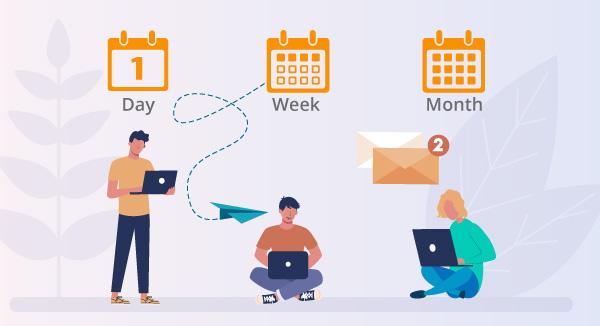
With that kind of discrepancy, it’s impossible to make everyone happy. But there are a few things you can do to get closer to more customers’ ideal cadence.
Consider cadence in your segmentation strategy
Email segmentation is a great way to bulk-tailor marketing emails to different preferences. As you consider how to market to each segment, think about cadence as well as content.
Old leads that fizzled out years ago won’t want to hear from you every week. But you could reach out a few times a year to try and reactivate them. On the other end of the spectrum, customers in a loyalty program are, well, pretty loyal. They like your brand, so they probably won’t mind if you show up in their inbox much more regularly.
Put customers in the driver’s seat
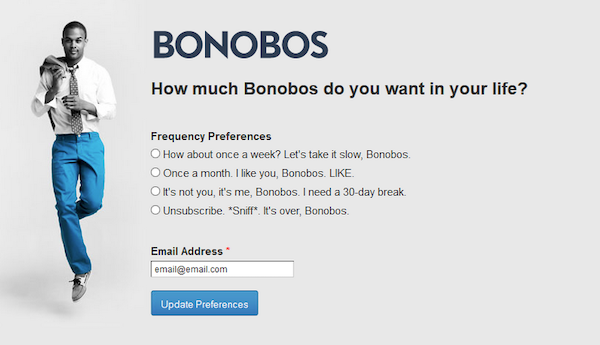
One surefire way to find out what your customers want is to ask them.
One way to do that is by adding cadence options to your email sign-up screens. Customers will be less likely to unsubscribe if they feel in control. Plus, you’ll collect valuable insights you can use to find the best cadence for the list as a whole.
You can also include a link to manage those preferences in your email footers. That way, customers can turn the flow down to a trickle instead of unsubscribing altogether.
Let’s recap
Like a competitive runner, pay attention to your cadence and how it affects your performance.
Make conscious, logical choices as you set up campaigns, and you’re off to a good start.
View your email cadences through your customers’ eyes to get even closer to the finish line. And the final stretch? That’s just a bit of fine-tuning.
